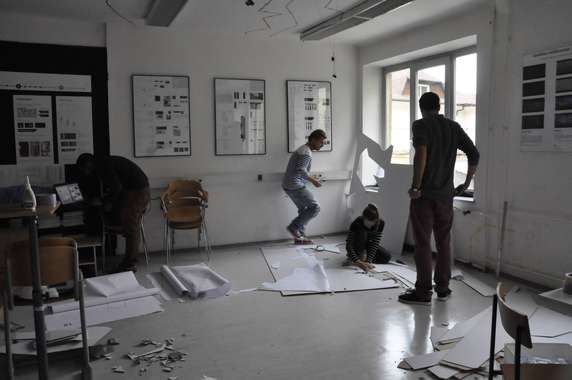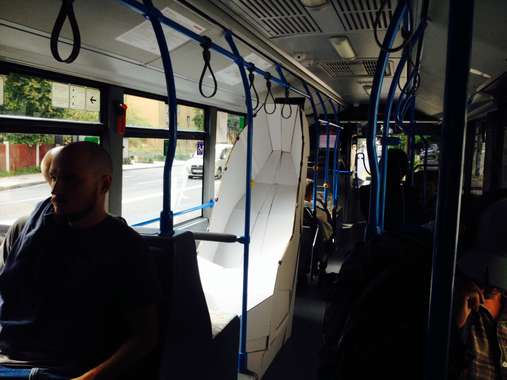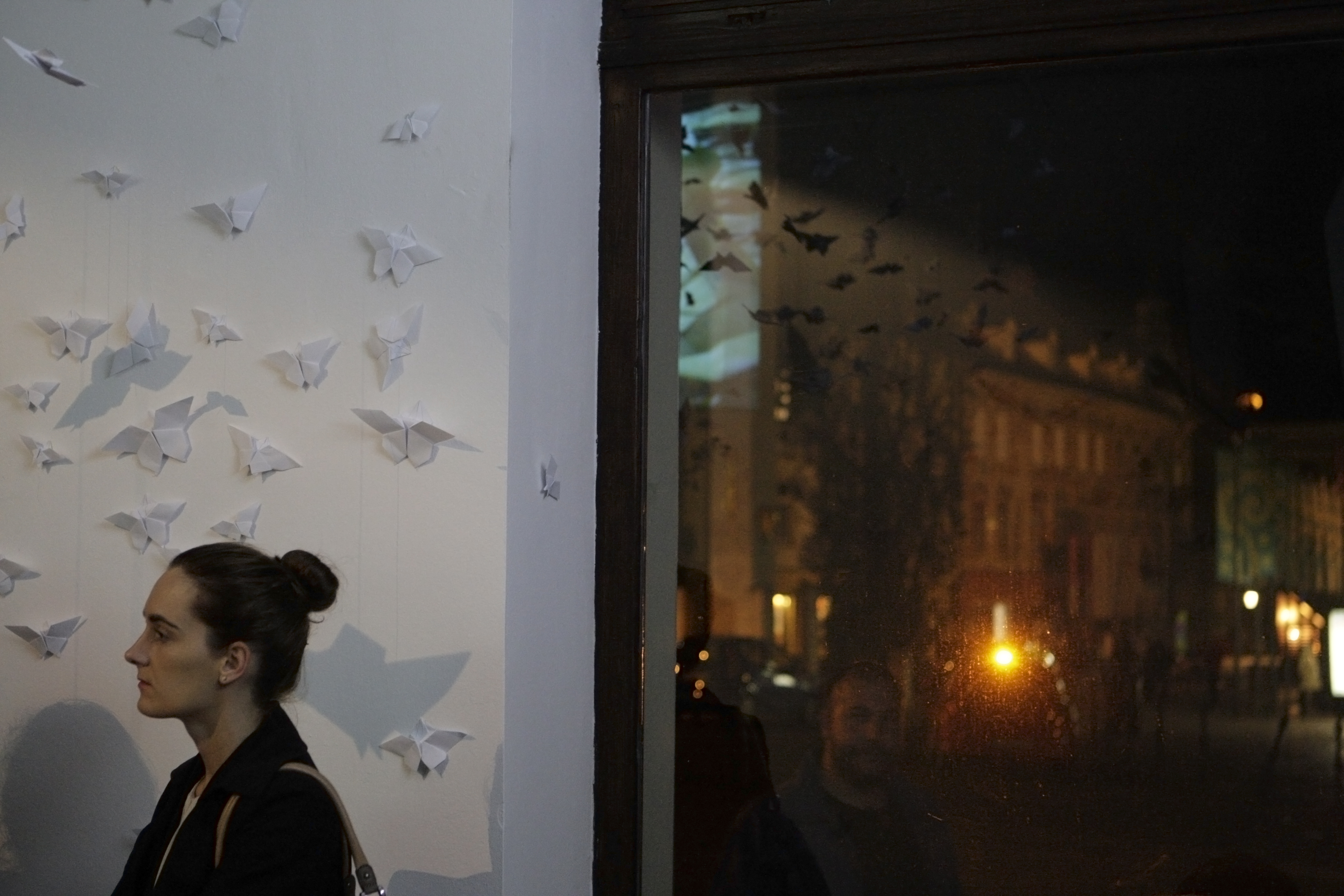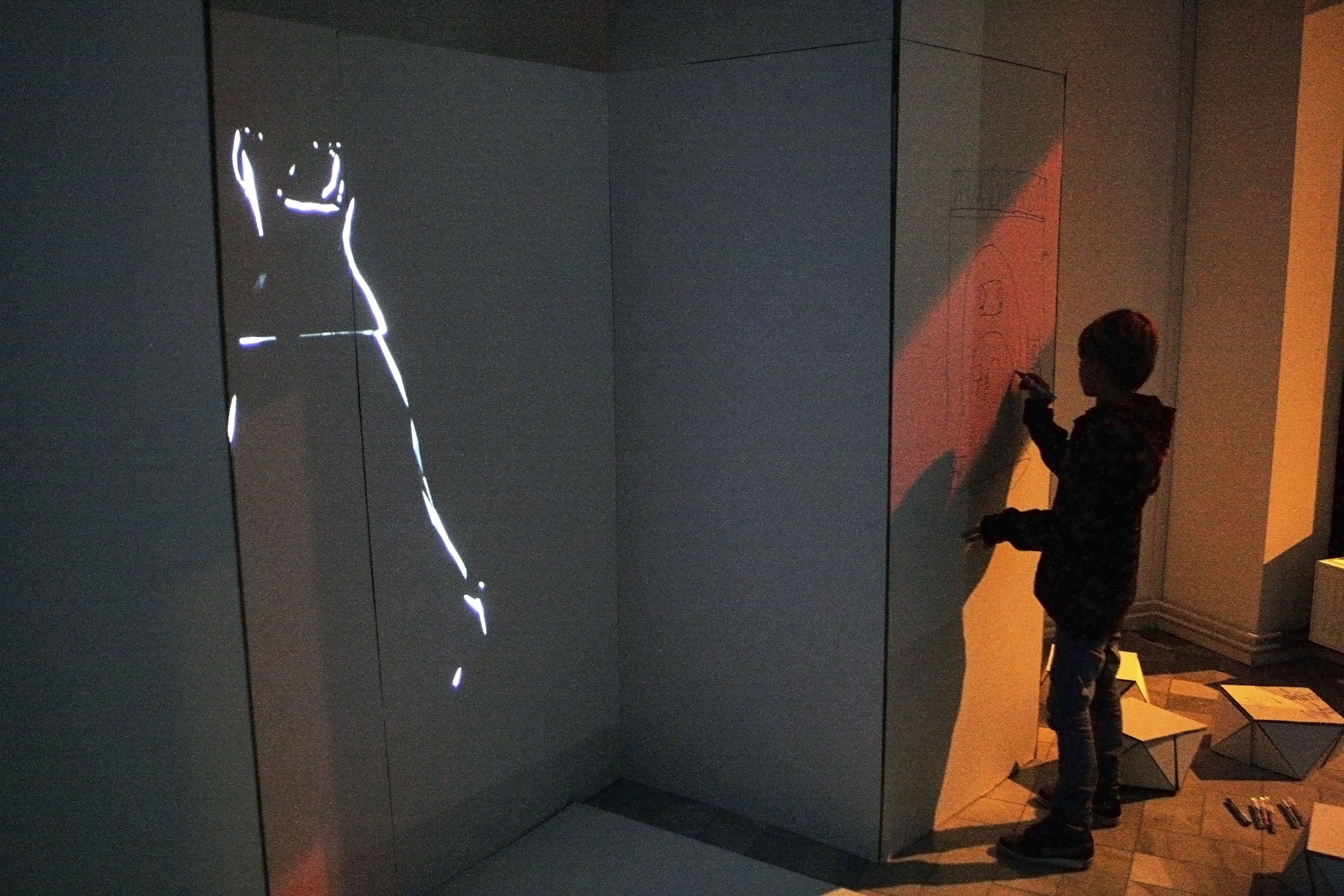Stigmarella
by zbrchka
This work has not been commented by curators.
Title
Stigmarella
Headline
The Story about a Girl and a Shoe
Concept author(s)
Renata Azman, Sara Bozanic, Pika Novak, Bostjan Botas Kenda, Sasa Kerkos, Jon Zagar
Concept author year(s) of birth
1964, 1979, 1988, 1964, 1977, 1989
Concept author(s) contribution
Project concept is the result of six months of hard research and concept design.
Concept author(s) Country
Slovenia
Designer(s)
Animation Design - Zoran Arizanovic, Timon Leder, Andraz Avsec, David Mosquera, Sebastian Montoya Vega, Music Design - Maja Matic, Exhibition Design - Jure Likeb
Designer(s) contribution
Animation Design For the animated film, new ways of storytelling, combining 3D models with 2D puppet animation and scripted illustration, were developed. Exhibition Design For the exhibition space, low-poly 3D modelling was combined with architectural mapping and material experimentation.
Designer(s) Country
Slovenia
Copy author(s)
Renata Azman, Katka Imperl
Copy author(s) year(s) of birth
1964, 1979, 1980
Copy author(s) contribution
Renata Ažman has been battling mental illness for many years, she is the author of the book Yoyo and the author of the modern version of Cinderella, Stigmarella. Katka Imperl and Sara Bozanic are authors of the copy stigmarella.com
Copy author(s) Country
Slovenia
Other author(s)
Matej Zvan, Lea Vucko, Miha Rogan, Katarina Seme, Urska Preis, Sara Rman, Aleksandra Tomc, Matej Lavrencic
Other author(s) contribution
Exhibition building and curating / research.
Other author(s) Country
Slovenia
Friendly Competition
Radical intimacies: dialogue in our times (2014)
Competition category
Mobilization
Competition field
academic
Competition subfield
educator/researcher
Subfield description
Institute for Transmedia Design Academy of Fine Arts and Design, University of Ljubljana Society "Poglej!"
Check out the Radical intimacies: dialogue in our times 2014 outlines of Memefest Friendly competition.
Description of idea
Describe your idea and concept of your work in relation to the festival outlines:
‘Stigmarella – The Story about a Girl and a Shoe’ addresses one of the most sensitive topics of today: stigma.
Stigma is a broad concept that describes a process that affects the most sensitive parts of human life and is therefore difficult to define. All feelings of stigma develop in the early stages of childhood, when the child begins to develop a view of themselves and the world.
However visible or hidden on the outside, our stigmas change the way we see ourselves and how we interact with others. As we see it, enforced by the stereotyped media of the modern world, it is an ever-growing problem of everyday life that needs to be addressed with diversity and tolerance.
‘Stigmarella – The Story about a Girl and a Shoe’ is a modified version of the Cinderella story, placed inside an exhibition space. It is presented in a way that allows the visitor to use their imagination. The setting is in an all-white space filled with origami figures that guide the guests through Stigmarella, an animated short film, projected on the cardboard structures and walls. It presents the story of a different girl and a different shoe, where she is stigmatised for having one leg shorter than the other. As the fairy creates one higher shoe for the ballroom dance, she stuns the court with her elegant movement while she enjoys a dance of a lifetime. Unlike her ‘Disney’ counterpart, the girl’s decisions and sovereignty, regardless of stigma, are placed at the forefront of the story: not the prince, not the marriage, but her own wishes. After they find her with the help of the higher shoe, she does not go on to marry the prince and live out her stereotypical ‘happily ever after’. Instead, ‘she only wanted to dance.’
The idea was to develop a broader cross-media project on stigmatisation, where the medium of an exhibition is meant for children. The exhibition is therefore part of a larger picture, where a serious problem is presented to children in a manner suitable for them.
It is not an end in itself; it was therefore developed and executed with a constant call for contributions, from children and other visitors alike.
In a workshop, children created illustrations of Cinderella, her early life, the Prince and the castle, which were then used as the basis for the animated short film. Visitors are invited to express their thoughts on stigma by scribbling on the white surfaces, or to ‘contribute a butterfly’, folding another origami butterfly to fill the space.
In workshops held during the exhibition, children are presented with this modern version of the Cinderella fairytale, and asked to express their thoughts, ideas, emotions and feelings onto the origami figures, while parents are given a copy of Renata Ažman’s YoYo, the book about sexual abuse — a printed book, published just before the exhibition opening.
The authors worked in an ‘agile-managed’ manner, where everyone freely contributed according to their skills and interdisciplinary knowledge. Through constant exchange, the artistic outcome naturally brought a combination of low-poly 3D and 2D animation, flat cardboard models and origami.
What kind of communication approach do you use?
A critical design approach that reflects today’s society is crucial. Through the project we address a taboo topic, acting as a catalyst between society and policy. We use public space as a platform for communication and participation in order to gain additional information that will help us to approach policymakers and help to effect a change in policy based on the need of the ‘marked’ society. The exhibition is built as a platform for visitor participation, serving us a tool for gaining additional information on the topic of stigma. The cross-media approach combines the exhibition with a non-illustrated printed book for adults, an informative website exhibition, workshops for children, discussion with a psychiatrist on mental disorder stigmas, talks with the authors and, finally, public contribution. Stigmarella’s honorary patron is Vlasta Nussdorfer, Slovenia’s human rights ombudswoman.
What are in your opinion concrete benefits to the society because of your communication?
Traditional fairytales like Cinderella, Sleeping Beauty, etc. teach girls to wait for their prince in a castle, to be saved by the world. These stories create stereotypes and teach children that wealth is something to aim for. The Stigmarella fairytale announces that all human beings can be perfect in their imperfection, if only we believe, and it implies that trust, true love and humility have greater value than money and property. On the other hand, there is the reality of abuse. We bring the topic of abuse closer to the public and create a mechanism that fosters an active dialogue between society and policymakers.
What did you personally learn from creating your submitted work?
The biggest problem does not lie in the people who suffer from stigma but in those of us that stigmatise.
We learned that we constantly consume and internalise stereotypes, but the more we think, talk and radicalise those ideas, the more we are able to diversify them. Working on the project has allowed us to stretch stereotypes to the extent that they no longer matter.
Why is your work, GOOD communication WORK?
The approach of the exhibition team was experimental, learning new ways to present the chosen topic — through the constant exchange of ideas and new approaches to the art of communicating effectively.
Where and how do you intent do implement your work?
‘Stigmarella – The Story about a Girl and a Shoe’ is part of the 24th Biennial of Design taking place at the Monument Protection Centre’s Gallery in Ljubljana, Slovenia from 17 September to 9 October 2014.
Did your intervention had an effect on other Media. If yes, describe the effect? (Has other media reported on it- how? Were you able to change other media with your work- how?)
The exhibition opened on 17 September 2014. A variety of broadcasters and digital media press outlets have covered the announcement of the event. However, the real influence is yet to be seen …






























